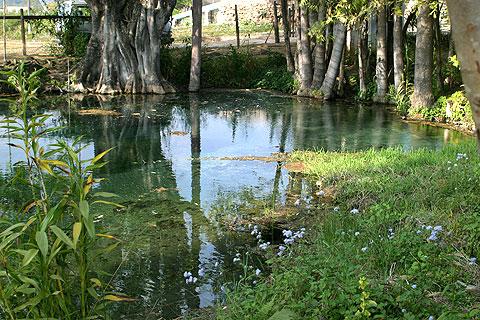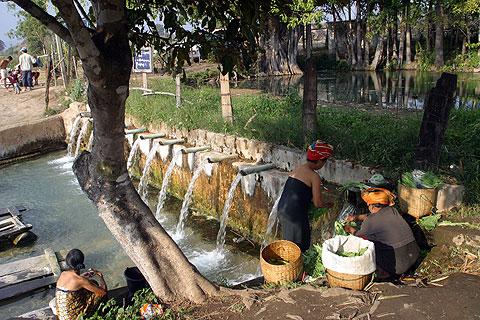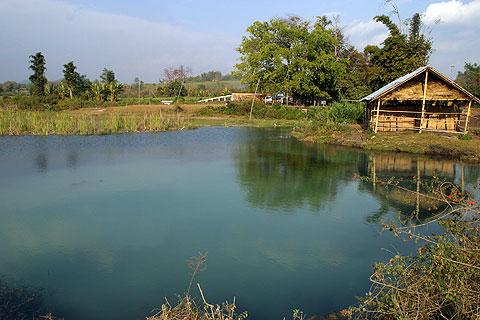
It’s not often that you get the chance to witness the introduction of a new fish into the hobby, but in the case of the ‘Galaxy Rasbora’, I was in the right place at the right time and that was exactly what happened…..
In the wee hours of the morning of September the 6th 2006, Kamphol Udomritthiruj of AquariCORP made the following post on the Petfrd forum, (a Singapore based fishkeeping website).

After the initial excitement died down, the tone quickly turned to skepticism. It was suggested that Kamphol had used ‘Photo Shop’ to produce his photo by mixing body parts of Danio erythromicron , (at the time Microrasbora erythromicron), and Danio choprai.
After a couple of days of this speculation, Kamphol silenced the crowd with his next post on September the 8th of more photos of the beautiful new fish.
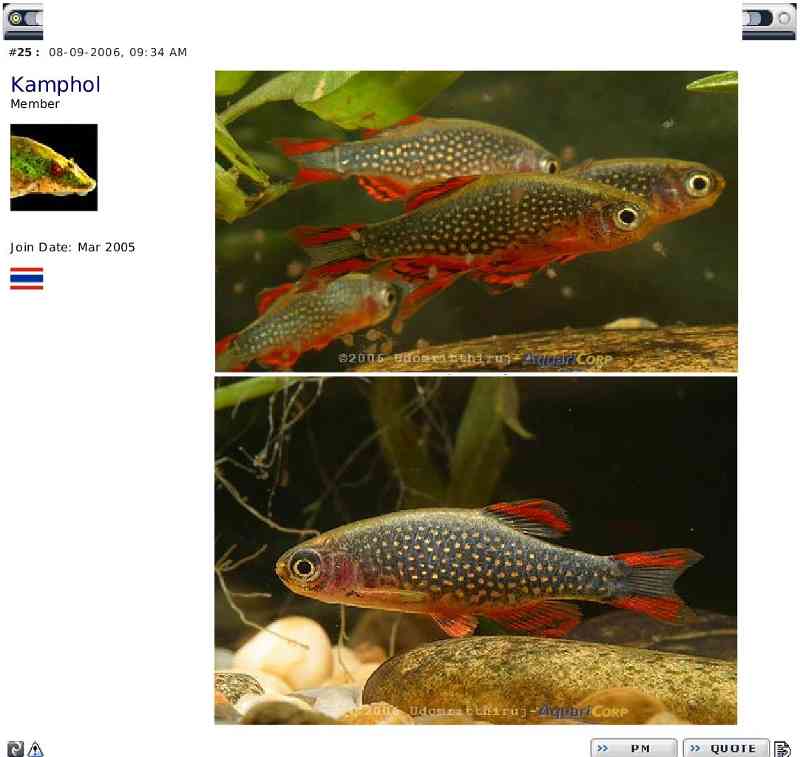
At this point the questions turned to where the fish were found and when they would be available to hobbyists. Kamphol replied that the fish was found in Myanmar just a month before, but since it was such a new discovery he was keeping its exact collection locality under wraps for commercial reasons.
As the clamor for these fish was still on the rise, it was announced on September 22, 2006 that Britain’s Aquatic Superstore in Bolton had received 800 of the new fish into stock and they would go on sale shortly. It was speculated that they would be likely to sell for 5 – 8 Pounds, ($8 to $12 US Dollars), for the first few months.
Here in the states, on October 31 2006 an auction on AquaBid was posted for the fish. When the auction ended the fish sold for $22.50 each with a minumum of 6 fish purchased.
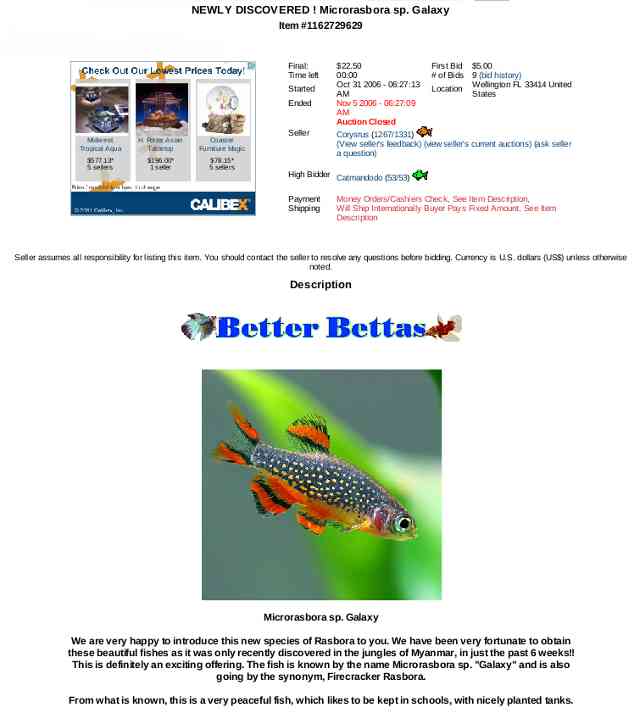
The next big news was to come on October 12,2006. This was when the announcement came that the fish had just been bred for the first time by fish gurus, Pete Liptrot (Aquarium Development Officer) and Paul Dixon (Aquarist) of the Bolton Museum Aquarium in the UK.
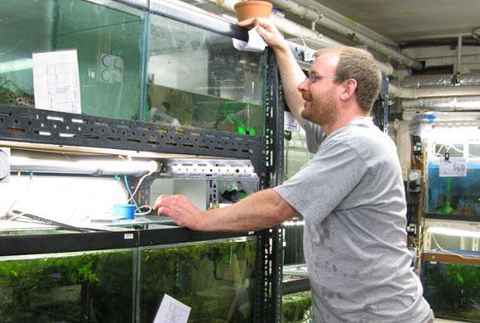
Pete Liptrot – Photo by Ivor Hilton
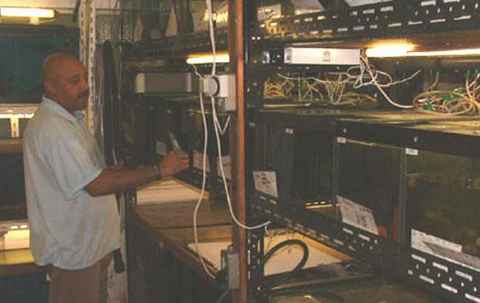
Paul Dixon – Photo by Ivor Hilton
When asked about the event, Paul says that he observed a brightly coloured male attempting to drive females into a spawning mop and Pete found seven small eggs in a clump of Java moss a week later and spotted some fry which had already hatched. Said Pete:
“The eggs have been laid over Java Moss and appear to be only very slightly adhesive, they drop out of the moss very easily. We’ve removed the moss to another aquarium to see what else hatches. As we were moving the moss one of the smaller males was very busy hunting around for eggs or fry.”
In February of 2007, just as things were looking very bright for our new little fish, the man who fist discovered it, Kamphol Udomritthiruj made the following post on the Petfrd forum.
It has only been six months since the discovery of this fish, and there should be much to celebrate at this time concerning this little jewel. The end of February should see its formal description published (w/ a new genus also accommodating erythromicron). Also, I am amazed at the global interest in this petfrd thread (surely with record number of views) but more importantly the whole thread continues with relevant and hard core data and ensuing discussion. Leading of course to its successful breeding, this despite withheld info on its habitat. Sadly, these breeding projects may be their only savior.
Alas, there is not much to celebrate concerning the galaxy habitat. This past Monday I had the opportunity to visit the type locality. East of Inle Lake, it is in the highlands at 1045 m elevation. It is a microhabitat. The water source begins with a spring.
Photo by Kamphol Udomritthiruj
This small pool is then diverted into an area for public use.
Photo by Kamphol Udomritthiruj
After which it flows into a sort of wetland, formerly overgrown with grasses. Water is at most 2-3 feet deep.
Photo by Kamphol Udomritthiruj
This whole flooded grassland/wetland is actually caused by a manmade weir for agricultural irrigation below the spring.
Photo by Kamphol Udomritthiruj
Within these past couple of months the vegetation has all been trampled to nonexistence. The catch is now at about 30 – 50 pcs a day. You know where I’m going.
Photo by Kamphol Udomritthiruj
I have a water sample that I have not yet analyzed, but your success with alkaline conditions seems to be correct as are cool water temperatures. It was a cool 24 degrees, and possibly lower where there were thermoclines/stratification in the fields. And, as the cat is being let out of the bag, the rosey loach Yunnanilus sp is also sympatric with the galaxy as are the D. sondhii. As soon as I have the water analyzed, I shall report. Keep your breeding projects going pet friends.
Well needless to say, the report was devastating to hobbyists who had been following the story world wide. Practical Fishkeeping magazine in the UK called for hobbyists to stop buying the fish unless their intent was to try to breed them. Shortly after this, Myanmar’s Department of Fisheries banned exports to allow officials to assess the situation.
Things were not looking good for the fish that had had such a bright looking future just months before.
Well, shortly after Kamphol posts about the sad state of the original collection site, our little fish gets it’s first scientific name. It was named Celestichthys margaritatus by taxonomist Tyson Roberts in late February 2007. The trade name of Celestial Pearl Danio comes from Celestichthys from the Latin and Greek words meaning “heavenly fish” and margaritatus meaning “adorned with pearls,” Celestichthys margaritatus translates to “heavenly fish adorned with pearls.”
In June of 2007 10 officials from the Department of Fisheries and the Myanmar Fishery Federation conducted a survey and found the fish at five locations around Ho Pong. Mr. Tin Win of the Hein Aquarium in Myanmar was one of those in this party. Their report identified populations in streams around Ho Pong; the village of Lwe Paw, 3.5 miles east of Ho Pong; the village of Naung Khone, 3 miles north of Ho Pong; the village of Loiun, 6 miles from Ho Pong; and Hugpark village, Loisan sit village, Ponglow village, all about 20 miles south of Ho Pong.
It was from this survey that I received these photos from Mr. Tin Win along with the water sample data.
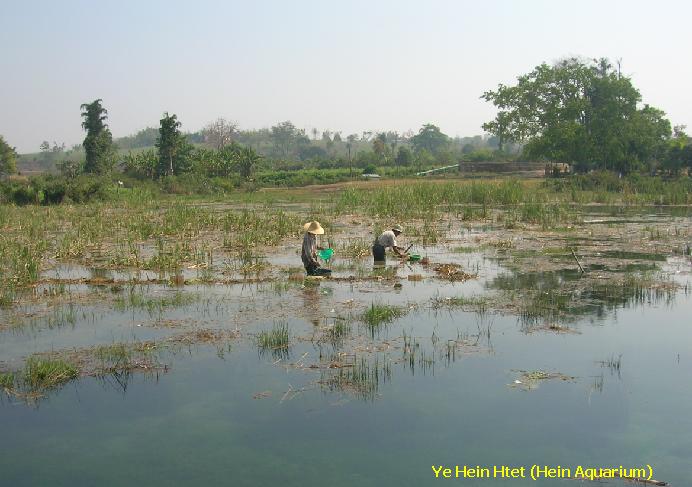
Original collection location site.
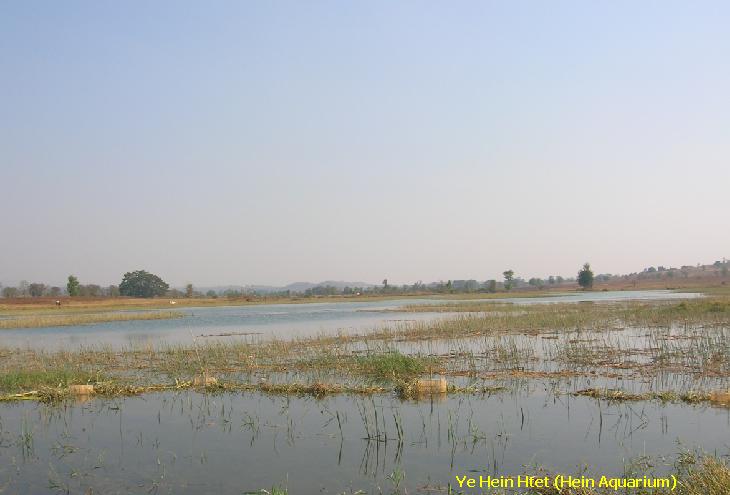
New location site #1
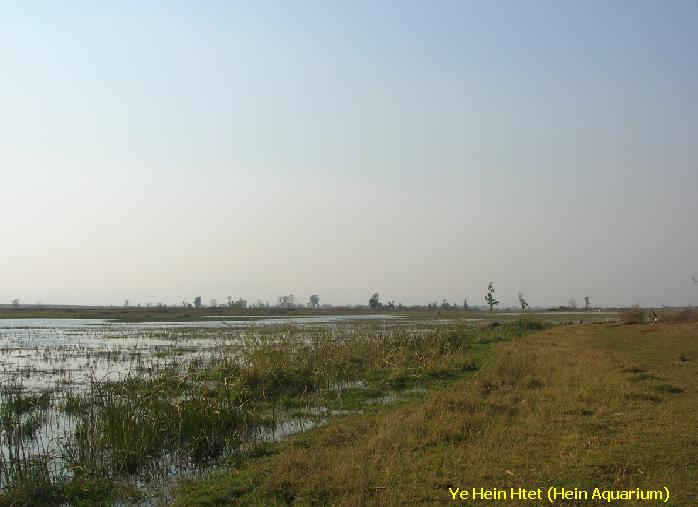
New location site #2
Tin Win reports the water where these fish are found is crystal clear with a pH of 7.3 and the conductivity of 250 micro siemen. The pond bottom is covered with sand. The area is mostly grassland and rice paddies, so the ponds are open to the sun and filled with a rich variety of aquatic plants.
With this new information, it seems that the initial scare of the fish becoming extinct in the wild were somewhat premature. All is well with our new fish again!
When it comes to names for our little fish, it turns out that third times a charm. A paper published in January of 2008 by Kevin Conway, WeiJen Chen and Professor Richard Mayden of Saint Louis University, will re assigned the species to the genus Danio. This was on the basis of a colour pattern common to all Danios (with the exception of D.erythromicron), osteological studies and phylogenetic analysis.
An interesting note about these fish is that before they were discovered by the aquarium trade, they were caught and sold as food to local poor people. Tin Win says they get a much bigger return on selling the fish for the aquarium trade compared to what they made when they sold the same fish for food. The fish that sold for over $20.00 each on AquaBid, would net the locals 25 Kyats (approximately .50 cents) for a can of 500 dried fish.
Over the years the prices have droped on these fish, and for about the last 18 months have held steady at around $4.00 per fish as an average price. They are a bit harder to produce in quanity, so they will likely never be a inexpensive as some of the easy to breed Danios.
Well that brings us up to date with these fish. I hope you have enjoyed this overview of the Celestial Pearl Danio history. If I remember something of interest, or there are new developments, I’ll be sure to post it here.

Photo by Peter Maguire

